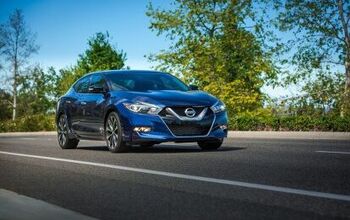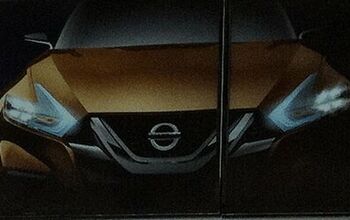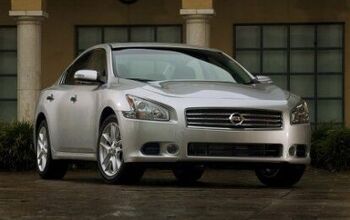New Life for the Shrinking Nissan Maxima?

Nissan’s future will not see it become everything to everyone, and certainly not in all markets. The 2010s, and the market share-chasing, globe-straddling expansionism that characterized that decade’s car-buying orgy, are violently over.
Also soon to be over, apparently, is the Nissan Maxima’s gasoline-powered powertrain.
The large-ish Nissan sedan’s fate has been the subject of much speculation ever since the current-generation model appeared. With a standard CVT and sports-sedan marketing pitch in tow, the Maxima didn’t wow reviewers, leaving many wondering exactly what its purpose is.
And as Nissan’s fortunes fell along with the Maxima’s sales, some pointed to a new role for the passenger car range-topper. That speculation gained new heat in early 2019, after Nissan revealed its electric IMs sports sedan concept. Boasting power aplenty (dual motors, 483 horsepower and 590 lb-ft of torque, and a claimed driving range of 380 miles), the concept hinted at a change at the top of Nissan’s car lineup.
Following Nissan’s sales and cash crunch, coupled with the secondary economic bite of the pandemic, Automotive News feels confident in claiming that the next-generation Maxima “should” appear in the form of the IMs. Whether or not the name Maxima is retained remains to be seen.
The same can be said for the appearance of customers. If people didn’t show up for the Maxima, would a ballsier sedan that ditches internal combustion make a difference? Can any non-premium passenger car, even if electric, rake it in? Tesla seems to prove that, yes, such vehicles can, though sales of the Model 3 and its brethren are juiced by Silicon Valley tech devotion and the futurist aura surrounding the company’s CEO.
If Nissan does replace the Maxima, it should appear in the second half of 2022.
The Maxima found 35,076 U.S. buyers in 2019, almost half of the volume the model enjoyed just two years prior. The bump in interest seen after the current generation’s debut quickly tapered off. Between 1994 and 2001, the Maxima reliably sold well over 100,000 units per year in the United States, with similar showings in 1986, 1989, and 1990.
[Image: Nissan]

More by Steph Willems
Latest Car Reviews
Read moreLatest Product Reviews
Read moreRecent Comments
- Lorenzo I just noticed the 1954 Ford Customline V8 has the same exterior dimensions, but better legroom, shoulder room, hip room, a V8 engine, and a trunk lid. It sold, with Fordomatic, for $21,500, inflation adjusted.
- Lorenzo They won't be sold just in Beverly Hills - there's a Nieman-Marcus in nearly every big city. When they're finally junked, the transfer case will be first to be salvaged, since it'll be unused.
- Ltcmgm78 Just what we need to do: add more EVs that require a charging station! We own a Volt. We charge at home. We bought the Volt off-lease. We're retired and can do all our daily errands without burning any gasoline. For us this works, but we no longer have a work commute.
- Michael S6 Given the choice between the Hornet R/T and the Alfa, I'd pick an Uber.
- Michael S6 Nissan seems to be doing well at the low end of the market with their small cars and cuv. Competitiveness evaporates as you move up to larger size cars and suvs.


































Comments
Join the conversation
I will never forget how one day I discovered that the cruise control on my 2003 Maxima SE with manual transmission would NOT remain set at 93 mph, but was perfectly happy at 92. Obviously, the Japanese engineer (or regulator) felt 150 kph was fast enough on cruise.
I think the Maxima exists soley as an upsell to an Altima intender whose money or credit extended upwards...probably costs the same to produce. Every CVT I've driven detracted from the car and engine. It may have uses, sport isn't one. Toss me a real tranny, willya ? Companies hate the transmission in general. Expensive to make, a lot of parts (less in a CVT), and you can't really charge more for them with options.